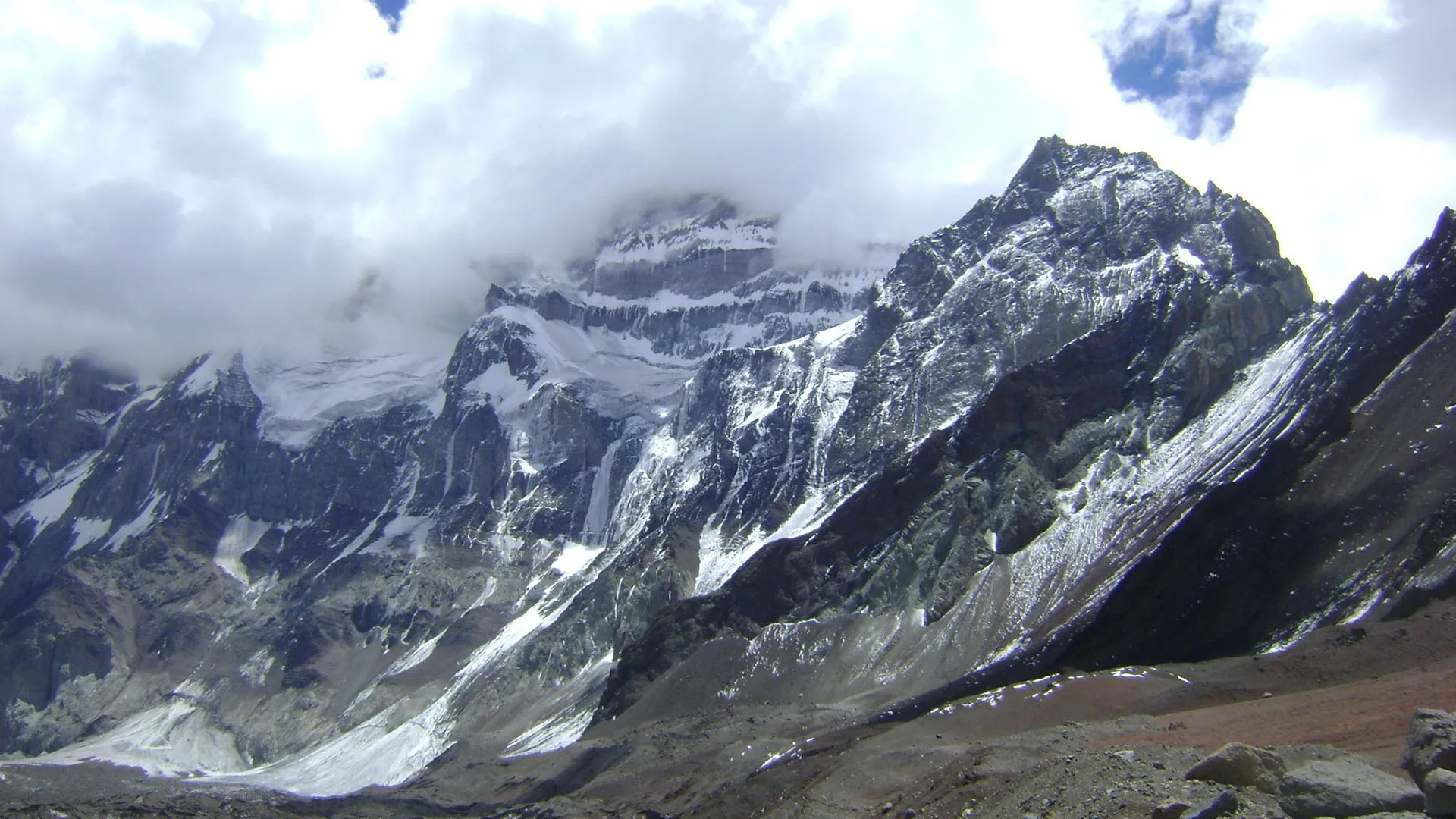Mountaineering in Argentina is an adventure like no other, offering a mix of exhilarating climbs, breathtaking landscapes, and unique cultural experiences. For mountaineers around the world, Argentina is synonymous with the majestic Andes, home to some of the highest peaks in the Southern Hemisphere. The country’s diverse topography provides challenges suitable for both novice climbers and seasoned experts, making it a top destination for those seeking the thrill of scaling towering heights. In this comprehensive guide, we will delve into the most iconic mountaineering spots in Argentina, essential safety tips, and what makes this South American country a climber’s paradise.
Why Mountaineering in Argentina is a Must-Experience Adventure
Mountaineering in Argentina is not just about reaching the summit; it’s about the journey, the culture, and the unparalleled beauty of the landscapes. Argentina’s mountainous regions, particularly the Andes, offer a wide range of climbing experiences, from the relatively accessible peaks of Patagonia to the challenging heights of Aconcagua, the highest mountain in the Americas. The country’s varied climate and geography mean that mountaineers can experience everything from snow-covered summits to verdant valleys and arid deserts, often within the same expedition.
Best Time to Embark on a Mountaineering Adventure in Argentina
Timing is crucial when planning a mountaineering expedition in Argentina. The best time to climb depends largely on the specific mountain range and peak you’re targeting. Generally, the optimal climbing season in Argentina runs from November to March, during the Southern Hemisphere’s summer. This period offers more stable weather conditions, longer daylight hours, and safer climbing routes, especially for high-altitude peaks like Aconcagua. However, for those interested in ice climbing or snow sports, the winter months from June to August also provide unique opportunities, particularly in the southern regions like Patagonia.
Aconcagua: The Crown Jewel of South American Mountaineering
Mount Aconcagua is the pinnacle of mountaineering in Argentina, standing at an awe-inspiring 6,959 meters (22,831 feet). As the highest peak in both the Western and Southern Hemispheres, Aconcagua attracts climbers from all over the globe. Despite its imposing height, Aconcagua is considered a non-technical climb, meaning that it does not require specialized climbing skills like rock or ice climbing. However, the ascent is still physically demanding due to the altitude and weather conditions. The Normal Route is the most popular path, providing a relatively straightforward climb, while the Polish Glacier Route offers a more challenging and scenic alternative.
Patagonia: A Mountaineer’s Paradise
Patagonia, shared between Argentina and Chile, is a region of extraordinary natural beauty, characterized by rugged mountains, glaciers, and deep blue lakes. Fitz Roy and Cerro Torre are two of the most famous peaks in Argentine Patagonia, both known for their technical difficulty and dramatic landscapes. Fitz Roy, also known as Cerro Chaltén, rises to 3,405 meters (11,171 feet) and is a favorite among experienced climbers due to its steep granite faces. Cerro Torre, with its needle-like summit, is even more challenging and often regarded as one of the most difficult climbs in the world. The unpredictable weather in Patagonia adds to the challenge, making successful ascents all the more rewarding.

The Andes: A Playground for High-Altitude Climbers
The Andes mountain range, stretching over 7,000 kilometers along the western edge of South America, offers some of the most diverse mountaineering experiences in the world. In Argentina, the Andes are home to not only Aconcagua but also a range of lesser-known yet equally spectacular peaks. Ojos del Salado, the highest active volcano in the world, and Mercedario are popular choices for climbers looking to test their skills at high altitudes. The Andes’ vast expanse means that climbers can experience a variety of landscapes, from the arid deserts of the north to the snow-capped peaks of the central and southern regions.
The Culture and Community of Argentine Mountaineering
Mountaineering in Argentina is deeply intertwined with the country’s culture and history. The local climbing community is known for its warmth and hospitality, often welcoming international climbers with open arms. In towns like Mendoza, the gateway to Aconcagua, and El Chaltén, near Fitz Roy, you’ll find a vibrant mountaineering culture with plenty of resources for climbers, including guides, gear shops, and accommodation. Argentine climbers take great pride in their mountains, and many are eager to share their knowledge and passion with visitors. Additionally, local customs and traditions, such as enjoying a maté after a long climb, add to the rich experience of mountaineering in Argentina.
Essential Gear for Mountaineering in Argentina
Proper gear is essential for a successful mountaineering expedition in Argentina. Given the diverse climates and altitudes, climbers must be well-prepared for varying conditions. Key items include:
- Clothing: Layering is crucial, with a moisture-wicking base layer, insulating mid-layers, and a waterproof outer shell.
- Footwear: Sturdy mountaineering boots with crampons are necessary for ice and snow.
- Climbing Equipment: Depending on the climb, you may need ropes, harnesses, ice axes, and helmets.
- Camping Gear: Lightweight tents, sleeping bags rated for low temperatures, and portable stoves are essential for multi-day climbs.
- Navigation Tools: A reliable GPS, maps, and a compass are crucial, especially in remote areas.
- Safety Gear: Avalanche beacons, first aid kits, and radios are important for emergencies.
Training and Preparation for Mountaineering in Argentina
Mountaineering in Argentina requires a good level of physical fitness and mental preparation. For high-altitude climbs like Aconcagua, acclimatization is key to avoiding altitude sickness. It’s recommended to spend a few days at altitude before attempting the summit. Cardiovascular fitness, strength training, and endurance exercises are important components of your training regimen. Additionally, climbers should familiarize themselves with the specific demands of their chosen routes, including potential hazards and the necessary technical skills.
Safety Considerations for Climbing in Argentina
Safety should always be a top priority when mountaineering in Argentina. The country’s varied terrain and weather conditions can pose significant challenges, even for experienced climbers. Key safety tips include:
- Weather Monitoring: Always check the weather forecast before and during your climb. Sudden storms can occur, especially in regions like Patagonia.
- Altitude Awareness: Acclimatization is crucial when climbing high-altitude peaks. Take time to adjust to the altitude, and be aware of the symptoms of altitude sickness.
- Guides and Permits: For difficult climbs, hiring a local guide can enhance your safety. Additionally, some peaks require permits, which should be obtained well in advance.
- Communication: Ensure you have a means of communication, such as a satellite phone or radio, especially in remote areas.
Environmental Responsibility and Conservation
Mountaineering in Argentina also comes with a responsibility to protect the natural environment. The country’s mountain regions are home to unique ecosystems that are vulnerable to human impact. Climbers are encouraged to follow Leave No Trace principles, which include packing out all waste, minimizing campfire impacts, and respecting wildlife. In areas like the Los Glaciares National Park in Patagonia, conservation efforts are in place to protect the fragile environment. Climbers can contribute to these efforts by staying on designated trails, camping in established sites, and supporting local conservation initiatives.
The Unique Challenges of High-Altitude Climbing in Argentina
High-altitude climbing in Argentina, particularly on peaks like Aconcagua, presents unique challenges that require careful preparation and respect for the mountain. The thin air at high altitudes can lead to hypoxia, a condition where the body is deprived of adequate oxygen. Symptoms include dizziness, shortness of breath, and fatigue, and if left untreated, it can escalate to more serious conditions like high-altitude pulmonary edema (HAPE) or high-altitude cerebral edema (HACE). To mitigate these risks, climbers should ascend slowly, allowing time for acclimatization, and be prepared to descend if symptoms worsen. Additionally, the cold, windy conditions at altitude demand high-quality gear and clothing to prevent frostbite and hypothermia.
Mountaineering in Argentina: Beyond the Peaks
While the towering peaks of Argentina are the main draw for mountaineers, the country’s mountain regions offer much more than just climbing. Many climbers extend their trips to explore the rich cultural and natural heritage of the areas surrounding the mountains. In Mendoza, known for its world-class wines, climbers can relax after their expeditions by visiting vineyards and enjoying local cuisine. In Patagonia, the town of El Chaltén offers numerous trekking opportunities, such as the hike to Laguna de los Tres, which provides stunning views of Fitz Roy. These experiences allow climbers to connect with the local culture and landscape in a deeper way.
The Impact of Climate Change on Mountaineering in Argentina
Climate change is increasingly affecting mountaineering in Argentina, particularly in regions like Patagonia. Glaciers are retreating, snowlines are rising, and weather patterns are becoming more unpredictable. These changes can alter climbing routes, making them more difficult or even dangerous. For example, the shrinking of glaciers can expose unstable rock faces, increasing the risk of rockfall. Climbers need to be aware of these changes and adapt their plans accordingly. Additionally, the mountaineering community in Argentina is actively engaged in raising awareness about climate change and advocating for sustainable practices to protect these vulnerable environments.
The Future of Mountaineering in Argentina
The future of mountaineering in Argentina looks bright, with increasing interest from both local and international climbers. The country is investing in infrastructure to support outdoor tourism, including better access to remote areas and improved safety measures. Additionally, there is a growing focus on sustainable tourism, ensuring that the natural beauty of Argentina’s mountains is preserved for future generations. As more people discover the thrill of mountaineering in Argentina, the community is likely to continue to grow, bringing new opportunities and challenges for climbers.
FAQs
What is the best time of year for mountaineering in Argentina?
The best time for mountaineering in Argentina is during the Southern Hemisphere’s summer, from November to March, when the weather is more stable and routes are safer.
Do I need a permit to climb Aconcagua?
Yes, a permit is required to climb Aconcagua, and it’s important to obtain it in advance. The process typically includes a medical check and fees.
Is it necessary to hire a guide for mountaineering in Argentina?
While not always necessary, hiring a guide is highly recommended for challenging climbs or if you’re unfamiliar with the region. Guides can enhance safety and provide valuable local knowledge.
What are some beginner-friendly mountaineering routes in Argentina?
For beginners, the Patagonian Andes offer several accessible peaks with less technical difficulty, such as Cerro San Lorenzo or lower sections of Fitz Roy.
How can I prepare for high-altitude climbing in Argentina?
Preparation for high-altitude climbing includes physical training, proper acclimatization, and familiarizing yourself with the symptoms and treatment of altitude sickness.
What impact is climate change having on mountaineering in Argentina?
Climate change is causing glaciers to retreat, altering climbing routes and increasing risks such as rockfalls. Climbers need to be aware of these changes and plan accordingly.
Also Read- A Guide to Mountaineering in Pakistan
Conclusion
Mountaineering in Argentina offers a unique blend of adventure, natural beauty, and cultural richness. From the towering heights of Aconcagua to the rugged landscapes of Patagonia, Argentina’s mountains provide endless opportunities for climbers of all levels. Whether you’re an experienced mountaineer looking for your next challenge or a beginner eager to explore the world of climbing, Argentina has something to offer. By respecting the environment and embracing the local culture, climbers can enjoy a truly unforgettable experience in one of the world’s most spectacular mountain regions.



